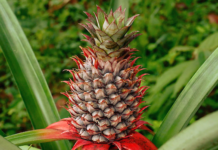by Ashanti Scott; Farnsely Middle School (Louisville, KY)
Your parent cooks rice for dinner; you’re very happy and ready to eat. The last thing you think of is… this rice could be dangerous.

In January 2012, Consumer Reports conducted a test of white and brown rice for the presence of arsenic. “In the 200 samples tested, one and a half times the federal limit of arsenic in water were found in almost every product tested,” author Chris Moran wrote.
The Food and Drug Administration (FDA) says consumers shouldn’t worry about the amount of arsenic in rice over short-term periods; the FDA says long-term health risks are still unclear.
Arsenic is a chemical element that is odorless, colorless, and tasteless, and is found in our soil, water, and rocks naturally.
According to the American Cancer Society, arsenic is known to cause cancer, as well as many other serious health problems, and it is classified as a class one carcinogen—a cancer causing substance—meaning it is dangerous to humans. Also, early childhood exposures to arsenic can increase the risk of lung cancer later in life.
According to the Environmental Protection Agency (EPA), eating inorganic arsenic by humans has been linked to skin, bladder, liver, and lung cancer. The federal limit for arsenic in soil is 5,000 parts per billion (ppb) to 20,000 ppb, and in water 10 ppb. When tested by the EPA, 20% of United States drinking water exceeded 20 ppb of arsenic.
According to Medical News Today, arsenic is so deadly to humans because it’s deposited in the body and intensifies over time, causing long-term damage.
A 2011 study in the Proceedings of the National Academy of Sciences by a Dartmouth University team of scientists reported on 200 women who ate rice. Of the group, 100 women ate a cup of rice each day and the other 100 women didn’t. “The 100 women who had a cup of rice each day for just two days had 53% more arsenic in their system than the women who didn’t, the subjects who ate a cup of rice each day had a median of 5.27 micrograms of arsenic in their body per liter,” Dr. Holly Phillips, a CBS news contributor, explained. “The way that rice is grown, in the soil with a lot of water makes it particularly able to soak up arsenic; the arsenic gets concentrated [(clustered or gathered together closely)] in the rice and eventually will eat it,” Phillips also stated. In the study, conducted by Professor Brian Jackson, director of the trace element analysis core facility at Dartmouth University, it was found that the amount of total arsenic in rice ranged from 23 to 128 ppb.
A survey of 220 Farnsley Middle School 7th grade students, found 168 students or 76% didn’t know arsenic was in rice.
To prevent arsenic poisoning you can purchase arsenic removal systems, test water and food for traces of arsenic, make people aware of risks; educate populations and at risk work forces about the harmful effects of arsenic poisoning and how it can be avoided, and have a doctor or health care staff check people at risk for the early signs of arsenic poisoning.
Ashanti Scott

This work is licensed under a Creative Commons Attribution-NonCommercial-NoDerivs 3.0 Unported License














Excellent research! I am so proud of you.
Interesting. I have been concerned about the amount of arsenic that makes it into our water supply, but I didn’t know measurable levels were making it into rice. Please tell those 76% of Farnsley students they were not alone in their ignorance.
Wonderful story and quite informative!
wow! great research!:smile
Excellent research! I am so proud of you.